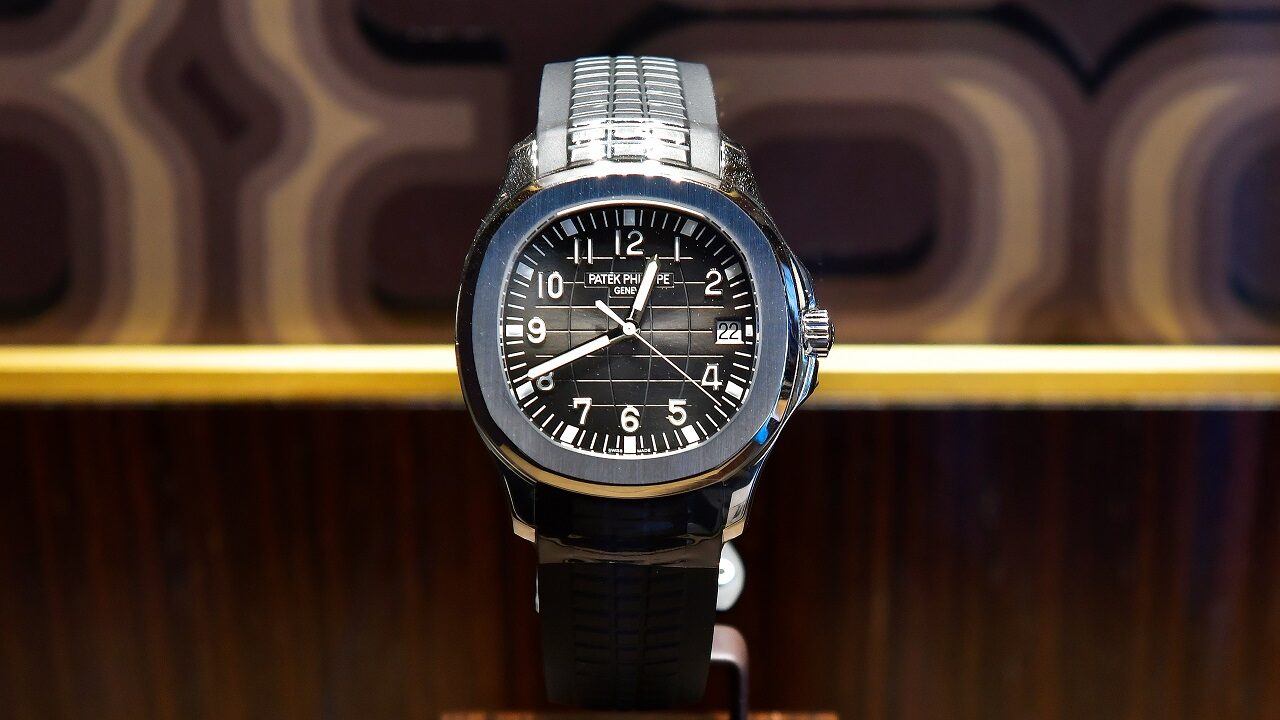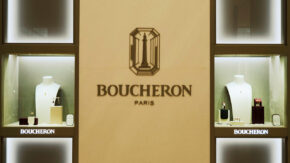Luxury brands are having a moment, but a new Apple product is providing tough competition for the cheaper segment.
Luxury timepieces with export prices above CHF 3,000 ($3,200) were the best-performing watch segment in January, according to data from the Federation of the Swiss Watch Industry. Watches over $10,000 are even in more demand, Swiss watch industry insiders added. The news is less positive for cheaper watches.
Barring unexpected events, this robust growth in luxury watches is expected to continue through the rest of the year. Meanwhile, for the pre-owned market, the incredible surge caused by speculative buyers and sellers is gone. Major pre-owned watch dealers are cutting staff and lowering prices to face this new reality.
Luxury pieces
“The watch executives, they’re all having a good time,” says Alexander Linz, a veteran watch industry journalist, and partner and head of content of WatchAdvisor, a popular YouTube channel about watches. “Brands have had record exports and expect more records in the months to come. If watches are expensive, they sell, and they are bought by people who have money and are willing to spend it on watches.”
Reginald Brack, a US-based watch-industry consultant, says sports watches, widely sought after over the past few years, are still selling briskly.
“Sports watches, not just steel, but precious metals, with multiple models from multiple brands have strong appeal and are waitlisted,” notes Brack. “The reality is the luxury consumer enjoys casualization, which started with their wardrobes and [has] moved to their wrist with a timepiece that can go from the beach to the boardroom.”
Entry level
By contrast, the CHF 200 to CHF 500 ($214 to $534) segment experienced a continued decline, with exports falling 14% year on year by value in January. Watches priced between CHF 500 and CHF 3,000 slipped 4.7%.
Linz believes a couple of factors are driving this trend. The first is the lack of a unique selling proposition, and the second is competition from other product categories. The price division’s toughest competitor, he believes, is the new Apple Watch Ultra.
“Those Swiss brands who make lower-priced watches have to do something, because they are not attractive anymore,” Linz points out.
Moderately priced watches from brands such as Longines, Hamilton and Rado — all owned by Swatch Group — are the exceptions. Each has a selling proposition in this price category that is still attractive to buyers. He acknowledges that Swatch had great success with its MoonSwatch, an inexpensive dual-branded replica of an Omega Speedmaster (another Swatch Group brand) sold exclusively through Swatch stores. However, Linz sees the group, like other brands in this price range, struggling without doing something highly creative.
The Apple Watch Ultra is the first digital watch with the potential to challenge the Swiss timepiece industry, Linz comments. The Vienna-based journalist relates that he is seeing this watch on people who can afford to buy a luxury watch. In fact, he even owns one. “This particular watch is taking away market share from the lower-priced industry,” he says, adding that the threat this watch poses is even greater.
“The industry has to really face that for the first time the Apple watch is an enemy in the luxury segment,” he continues. “It’s the first time Apple delivered a watch that is not only extremely interesting and cool-looking but accepted by wealthy people.”
Volatile pre-owned market
The price of pre-owned watches dropped 25% year on year as of February 23, according to WatchCharts, which provides analytical data for the secondhand watch market. Not surprisingly, the brands that gained the most during the highly speculative period have dropped the most. For the year, Rolex is down 23%, Patek Philippe fell 15%, and Audemars Piguet slid 18.5%, according to WatchCharts figures. They are not alone, with many major brands also experiencing decreases in the resale value of their watches. WatchCharts’ listed prices are not necessarily final for these timepieces. They are often further negotiated. However, it does provide a consistent reference for list prices.
The result of the decline in marquee timepieces has been downsizing and the lowering of prices. Chrono24, one of the largest marketplaces for pre-owned watches, cut about 13% of its workforce in January after a hiring spree. On March 8, Watchfinder & Co., Richemont’s online pre-owned watch-selling platform, reportedly said it would cut prices based on its valuations by 15%.
Slowing economic growth, higher interest rates, the collapse of cryptocurrencies and the disappearance of Chinese buyers due to another round of Covid-19 isolation led to this steep drop in prices. This was expected, as the incredible demand of the past few years couldn’t continue, but the pace of this slowdown caught even seasoned dealers by surprise.
“Last year was a s**t show in the secondary market mainly driven by speculators, new to the secondary watch market, who were fueled by the crypto craze,” Brack says. “When that bubble burst, the artificially high secondary-market prices started to drop. Many dealers and speculators were overstocked, thinking that the party was never going to end. We’re finally returning back to normalcy where we still see slightly elevated prices but are no longer seeing the ridiculous triple-digit growth in certain models.”
US focus
With China struggling from a reoccurrence of Covid-19, the US remains the number-one market for Swiss watches. Overall, exports of the country’s timepieces to most markets gained year on year in January with the exception of China, certain countries in the Asia-Pacific region, and a couple of Middle Eastern markets. Orders from Hong Kong, the third-largest market for Swiss watches, grew 10%.
“What was once thought of as a necessary evil by so many Swiss watch executives is now an exciting part of a multiyear product plan,” Brack says of the US market. “Swiss, German and Japanese watch brands are doubling down on the US. We are heading into the perfect storm for luxury.”
The US market will remain strong, but China will return and maybe overtake the US as the top market, Linz predicts. However, he says Hong Kong will likely not recover because the Chinese government is transferring its focus to the small island province of Hainan, just south of the former British colony.
The Chinese government has transformed Hainan into a free-trade port with offshore financing and duty-free shopping, as well as using lower taxes and reduced visa requirements to help draw in foreign businesses and tourists. Linz says this will lure Chinese buyers to Hainan from Hong Kong, which he says is the shopping center of China.
“In Hainan you can buy watches like you do in Europe,” he says. “In the long term it will harm Hong Kong. All of the watch brands are there.”
As the year progresses, Linz is hoping that the normalcy returning to the pre-owned watch market will continue to influence the rest of the watch industry.
“I think what we will see in the next few years is a customer that will come back to value instead of artificially hyped prices,” he says. “Longines is value. Tudor is value. Breitling, IWC [Schaffhausen] and Omega are all priced fairly, even though their prices moved upwards. Even though the prices are quite high, when compared to other brands you still get value at the end of the day.”
Image: A Patek Phillipe watch on display at a store in Thailand. (Shutterstock)



